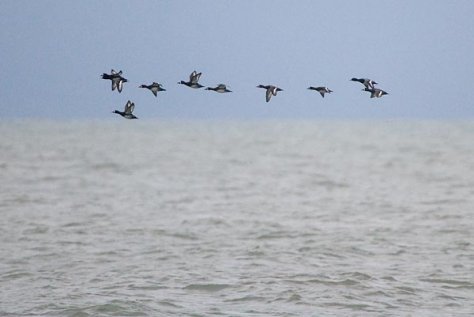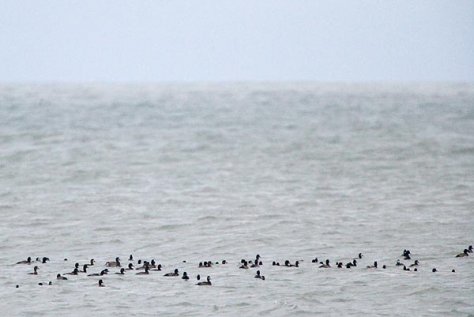Passing autumn migration of greater scaups
Photos: Arne Ader
Translation: Liis
Greater scaups
Greater scaup Merivart Aythya marila
The autumn migration is not as massive as the springtime one; remaining about ten times smaller in numbers, or as an estimate up to some twenty thousand birds. Why we see less of them now in autumn is a legitimate question: the autumn migration route of greater scaups is simply more to the north. They winter in the areas around the Mediterranean but up to a couple of hundred individuals may stay in our ice-free areas.
In Estonia greater scaups nest in the Vilsandi neighbourhood; based on counted pairs and the decrease in numbers it is an endangered and protection-meriting diving duck throughout Europe. Around the islets in the Sounds Sea (Väinameri) sometimes quite large colonies of moulting individuals can be seen after midsummer.
The autumn plumage of course differs from the springtime one. The males have lost the green metallic sheen from the head feathers. The plumage has become duller, chest dark grey. The female differs, as is characteristic for ducks, from the male, her head and neck feathers are dark brown compared to the dully brown body. The white ring of the female around the grey beak base is striking. In flight view we see the broad white wing speculum by which they resemble tufted ducks, or the other way about. Body length stays below half a metre, weight is around a kilo.
First-class divers, feeding on small molluscs and crustaceans, bristleworms and mussels. Lacking better the migrants will not despise vegetabilic food: algae and kelp.
Greater scaups
Greater scaup observations: LINK










